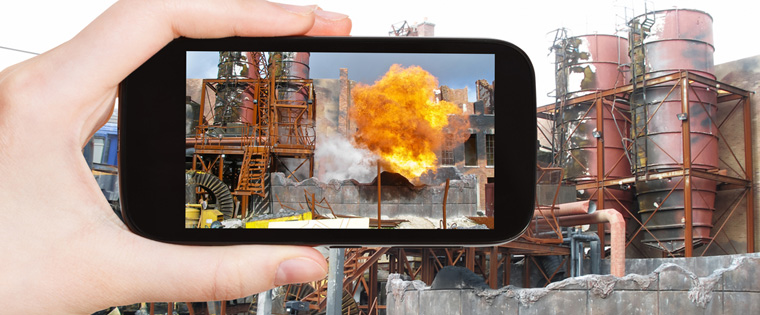Blended Learning for Safety Training: How Does It Work?

One of the most important responsibilities of an employer is workplace safety. Every year, several employees suffer from non-fatal workplace injuries, and some unfortunate ones even face fatality. An increasing number of accidents in the workplace can have a negative impact on employee morale as well as the company’s image. This single issue can be equally damaging in both the long and the short run. It would deter employees from working in a place that is prone to incidents, causing a severe drop in skilled workforce, and thus productivity. In addition, lack of safety can also cause potential damage to highly sophisticated and expensive machinery.
This picture can change if employees whole-heartedly comply with safety laws, regulations and practices. This can only happen if employers leave no stone unturned in training their workforce on the issues of safety. Blended learning is a great option to effectively train employees on workplace safety. A blended learning approach essentially means using a combination of classroom and online training, to give users the best of two very different learning methodologies.
A blended learning approach has the freedom to employ several delivery methods to engage each learner’s preferred learning style. By combining the firmness of classroom training with the fun interactive elements of digital learning, even employees who do not like training can enjoy this experience. This greatly increases the reach and scope of the training program and can include even the most reluctant of learners. Dual instructional methods have proven to facilitate knowledge retention and recollection.
Wish to create an immersive blended safety-training program? Below are some tips that you can keep in mind:
Clearly Identify Safety Objectives
Like any other training strategy, it is very important to define the learning objectives of a blended learning program as well. Unless it’s a generic fire-safety course, the safety requirements of every organization are unique. To understand the setup and machinery of a company, and its associated health hazards, course developers must closely work with Subject Matter Experts from your organization. Once the objectives are clear, developers can appropriately design classroom and digital material to tackle each one.
Facilitate Communication with Peers
Safety training is not related to something virtual. Rather, it tackles a very real and physical concern that some people have experienced. Hence, it is necessary to share their take on safety, with learners. This is possible through blended learning as you can always include a classroom session or a video conference with an experienced employee. Or, you can even have something as simple as a short webinar with safety experts. Their experience and take on the matters of safety can prove to be highly valuable to your learning employees.
Create Classroom Role-Playing Games
Collaborating with co-workers is important for an effective blended learning experience. What better way to train employees about a practical scenario than to emulate one in the classroom? Role-playing games can give users highly practical insights on what they are going to face in the workplace. When learners come together in such an active learning environment, they exchange ideas, experiences, skills, and perspectives, to create an enhanced sharing space that benefits one and all.
Create Online Assessments
The best way to judge whether all the classroom and digital training stand true to their promises is to create assessments. You need to determine how you would test the knowledge of participants at the end of each module, whether it should be through a quiz or by engaging them in a lively discussion. Online assessments can point out areas where your employees might be lacking and help you to take corrective steps to improve that.
Supplement with Just-In-Time Learning Modules
Even after sincerely undertaking all the classroom and digital training, when employees get down to perform the task, there still might be small clouds of doubt hanging over them. This can prove to be dangerous when it comes to safety. Short, just-in-time learning modules can serve as the perfect doubt-buster when employees need them the most. These bite-sized courses only provide highly-specific and practical information, that is necessary to ace the task at hand.
Blended learning is just your thing if you want to impart effective safety training. By mixing classroom and digital training methods, it adequately addresses your safety training needs, making sure that your workplace stays accident-free.




![What Exactly is the Bookend Blended Learning Model? [SlideShare]](https://blog.commlabindia.com/hubfs/Imported_Blog_Media/blended-learning-bookend-model-slideshare.jpg)
![Blended Learning for Corporate Training: Overcome 3 Implementation Challenges [Infographic]](https://blog.commlabindia.com/hubfs/Imported_Blog_Media/blended-learning-implementation-challenges-solutions-info-v1.jpg)